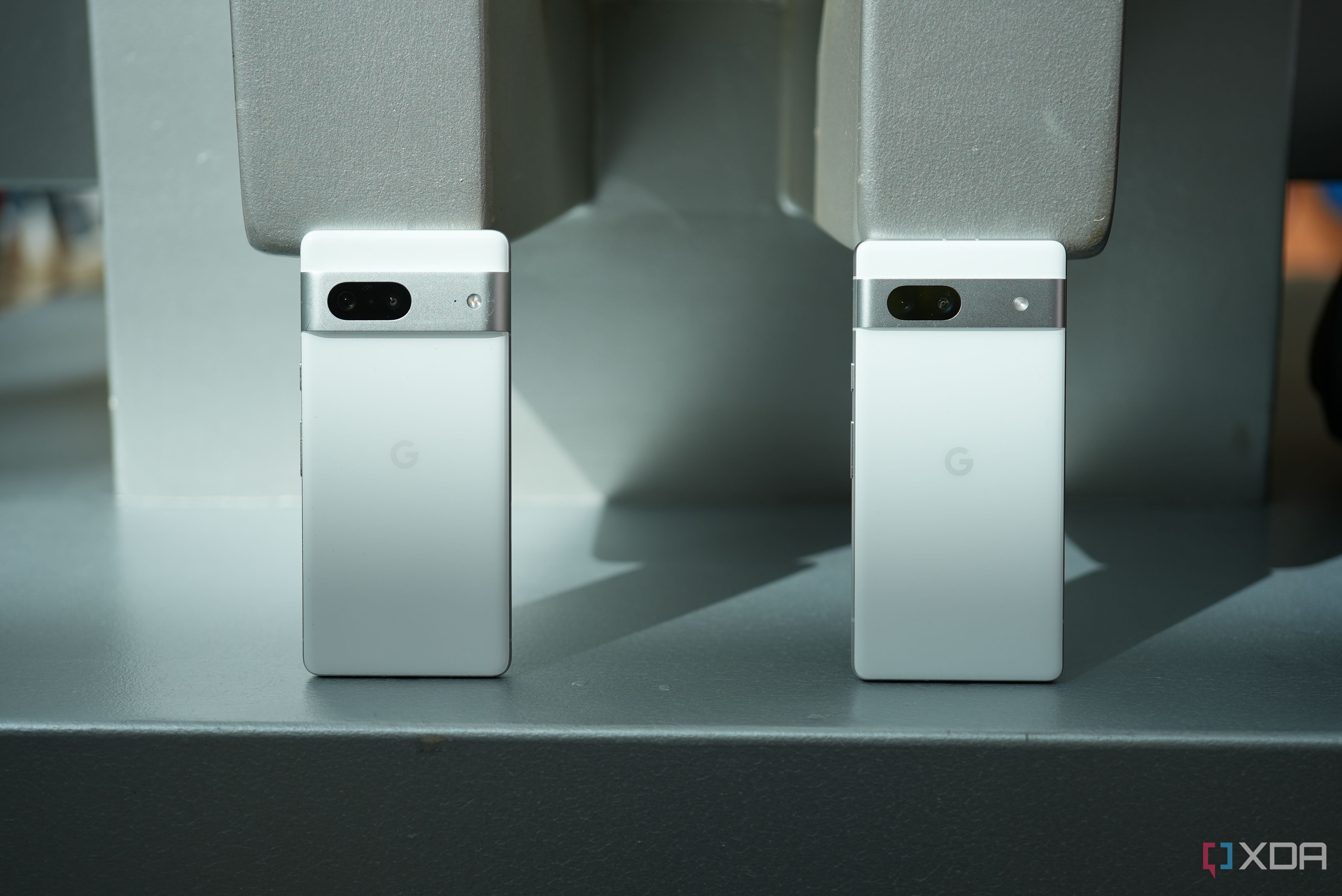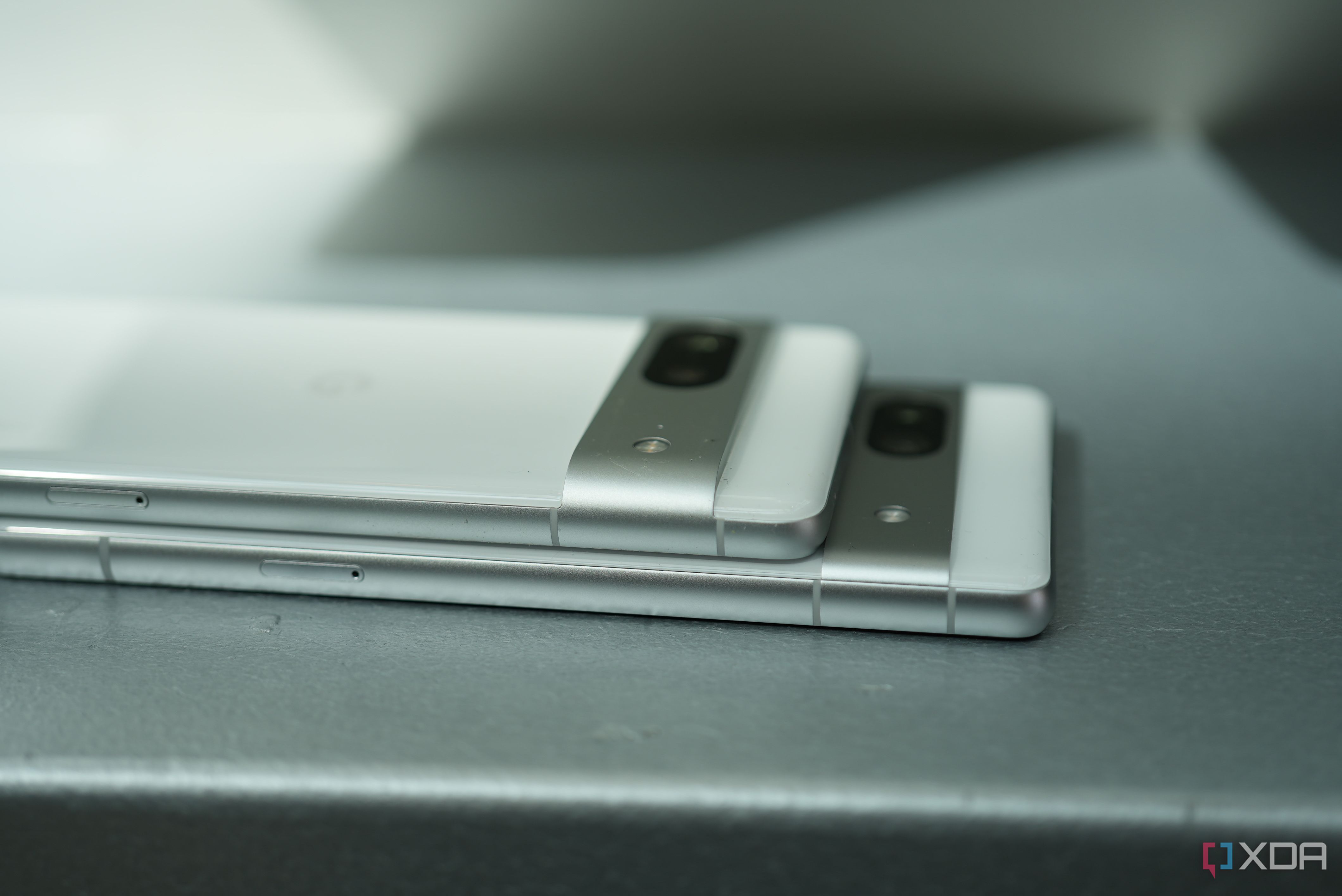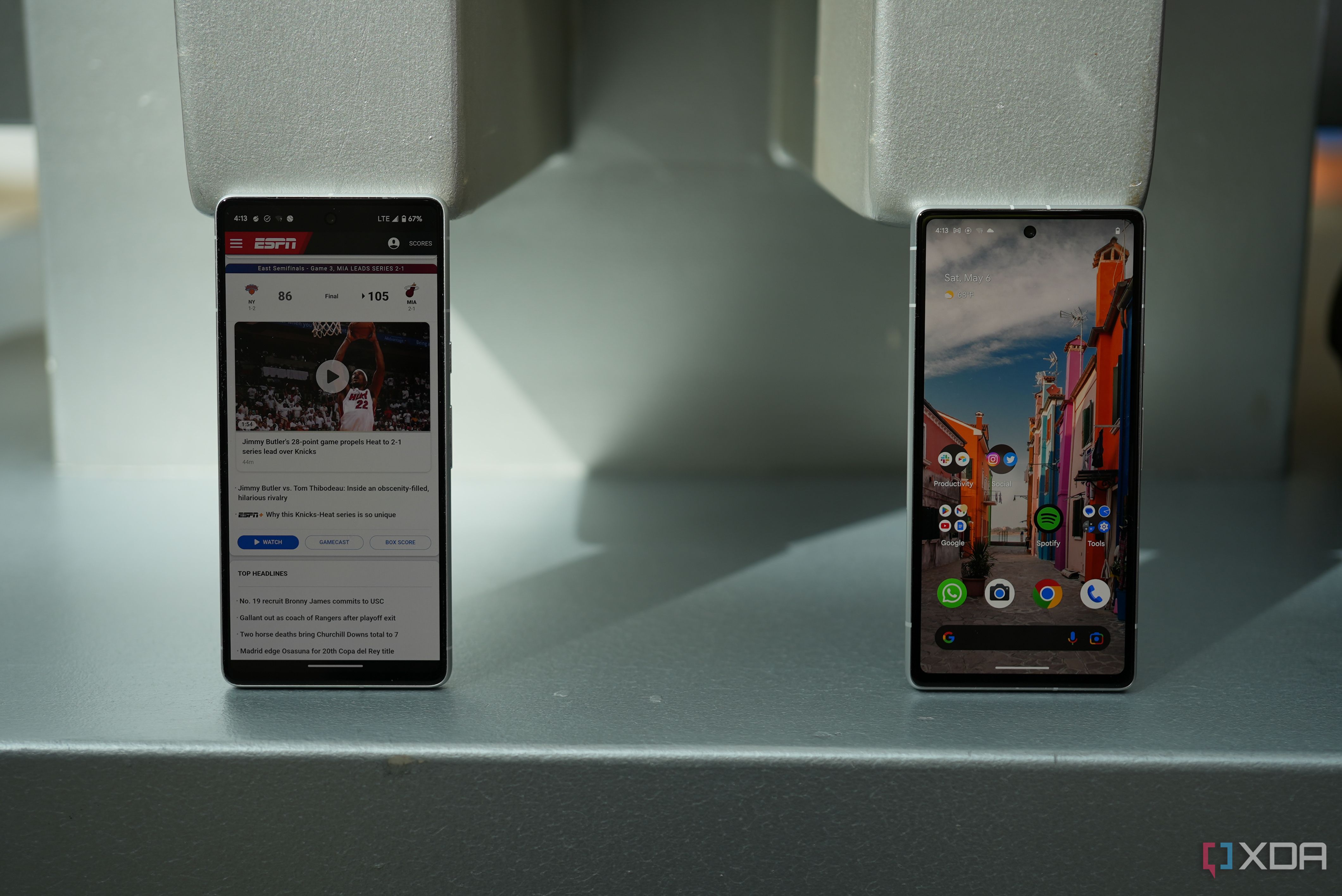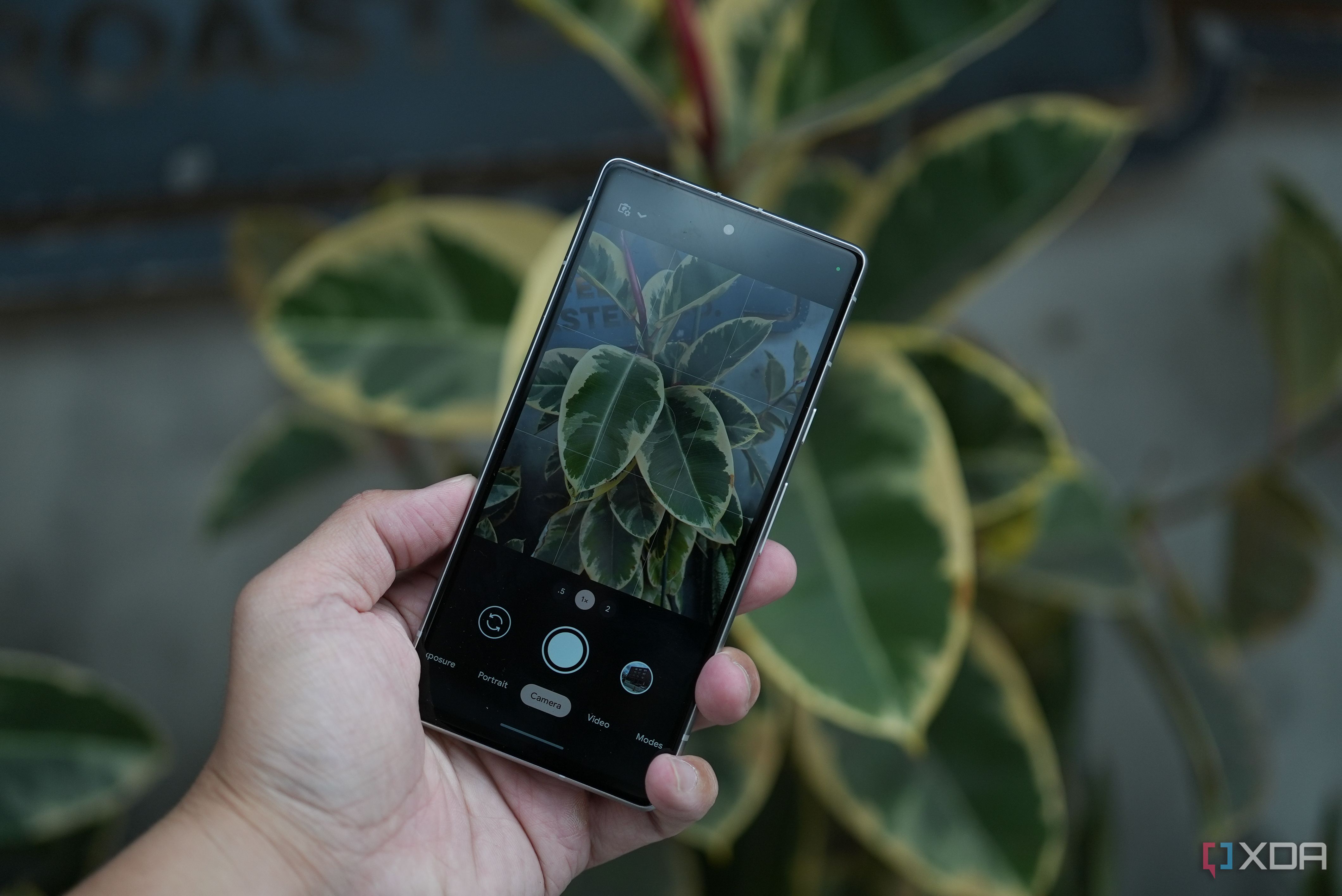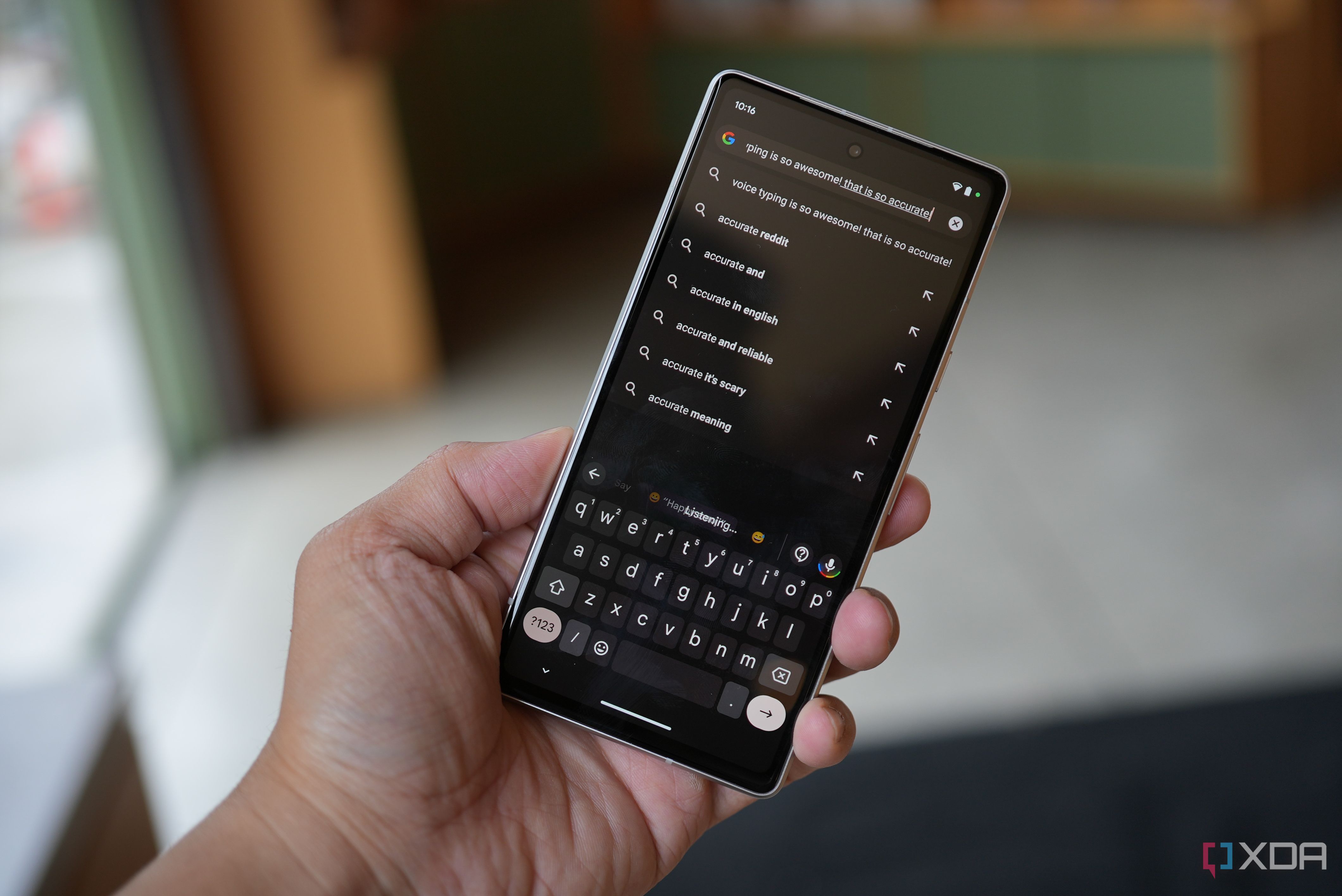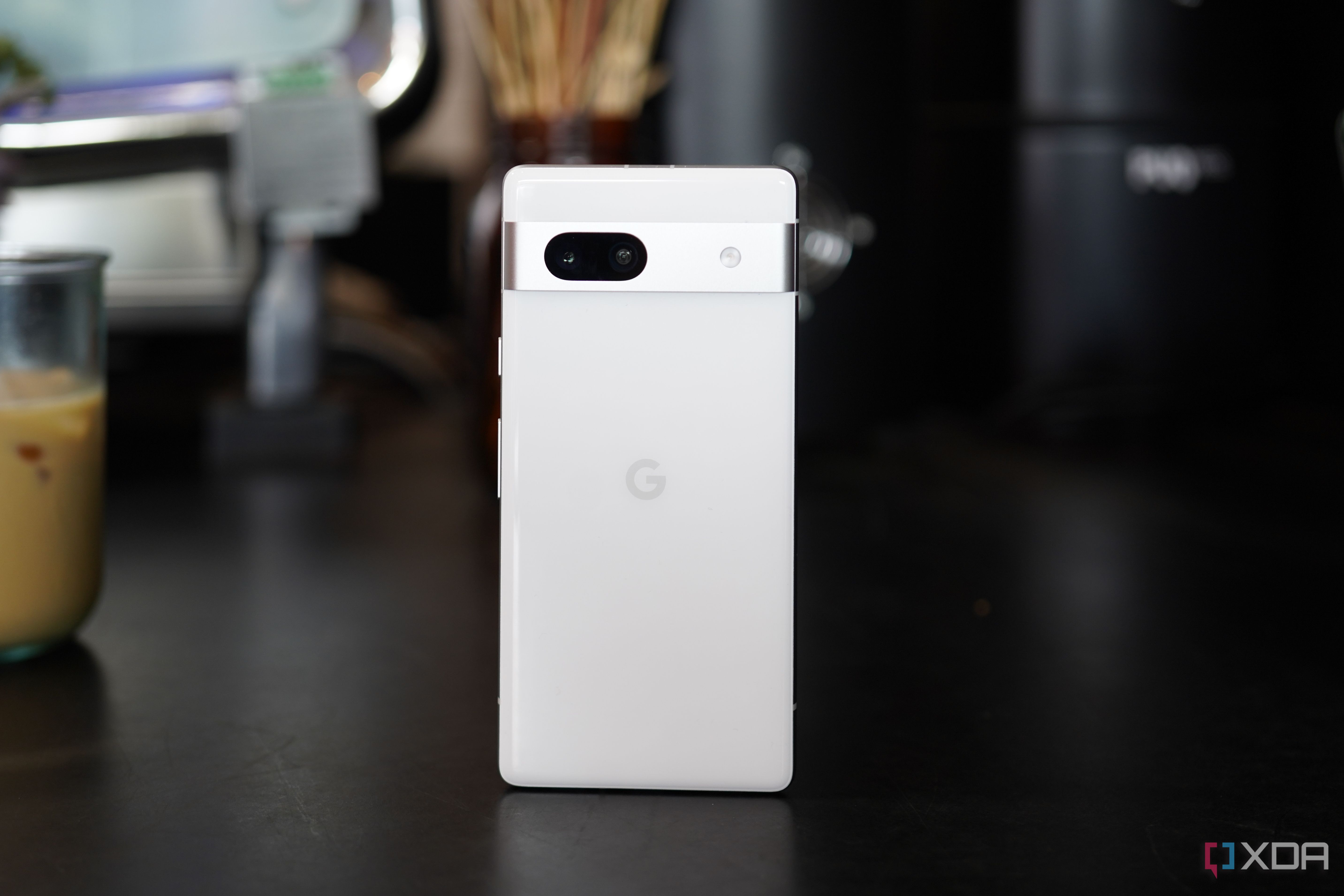-
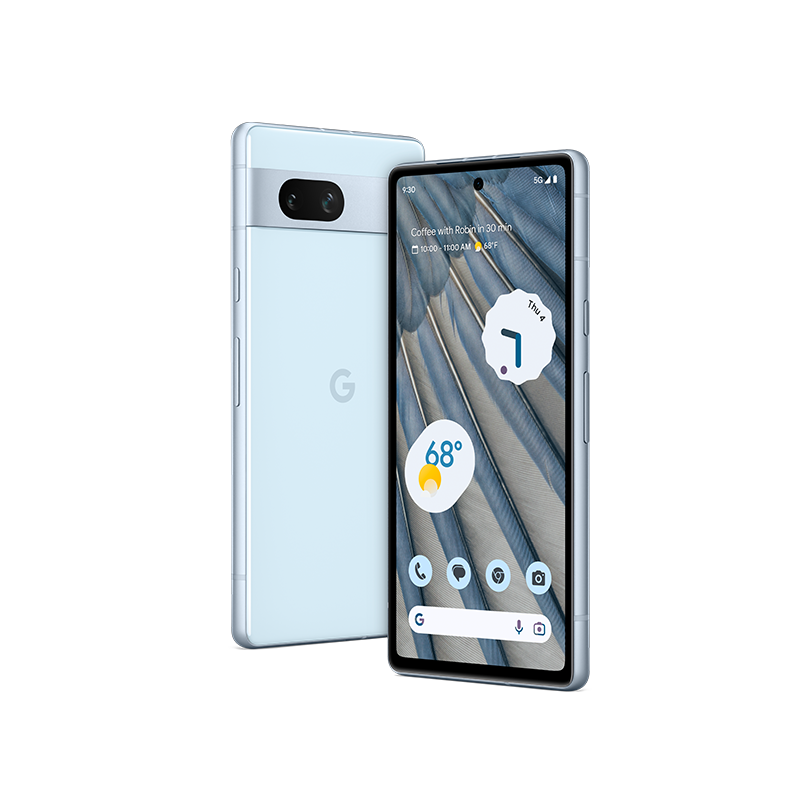
Google Pixel 7a
$352 $499 Save $147Google's latest mid-ranger brings several improvements over last year's model, making it a great option for the budget conscious. The Pixel 7a packs the flagship Tensor G2 chip, flagship-tier cameras, an improved 90Hz display, more RAM, better durability, and wireless charging support.
Pros- Almost as good performance as the Pixel 7 at lower price
- Small and comfortable to hold
- Very affordable
Cons- Very slow wireless charging
- Screen brightness lacking
-
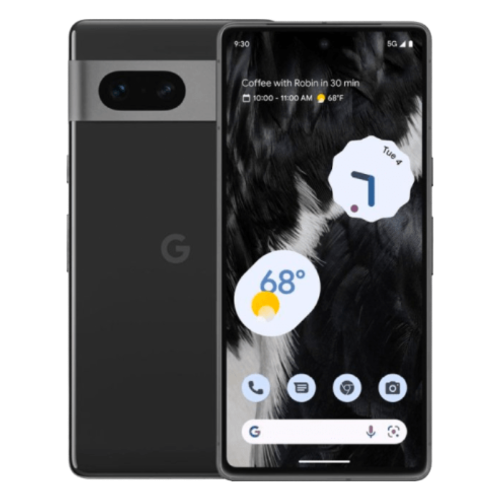
Google Pixel 7
$400 $599 Save $199The Google Pixel 7 is a refinement of the already excellent Pixel 6, making for a very polished phone with a great camera. Powered by the in-house Tensor G2 processor with a vibrant high-refresh AMOLED screen, the Pixel 7 is an impressive device for the price.
Pros- Main camera sensor on par with flagship phones
- Premium construction
- Impressive 90Hz AMOLED display
Cons- Still slow wireless charging
- Not sure if it's worth $100 over Pixel 7
Google's A series of mid-range smartphones have always had similarities to their preceding Pixel phones, particularly the base model. But this year, the line between the just-announced Pixel 7a and Pixel 7 is blurrier than ever. In fact, the average consumer may not be able to tell the two phones apart unless they put them side-by-side. But there's a $100 difference between them, so which phone should you get? What does that extra Benjamin get you? Let's find out!
Google Pixel 7a vs Google Pixel 7: Pricing and availability
The Google Pixel 7a only comes in one configuration and one price: $499 for 8GB of RAM and 128GB of storage. It hasn't been out very long, but you can already get some good discounts on it from Amazon and a bunch of other retailers. Google's apparently banking on consumers using cloud storage because 128GB could be a bit tight after years of use. The Pixel 7 is also widely available and comes in 128GB or 256GB storage options (both also with 8GB of RAM) at $599 and $699, respectively. The regular Pixel 7 is also heavily discounted these days, so be sure to stop by our collection of the best Pixel 7 deals to see if you can get it at a discounted price.
The Pixel 7a has four color options: Charcoal (black), Snow (white), Sea (Blue), and Coral (Orange), with the latter being a Google store exclusive. The Pixel 7 has three color options: Snow (white), Lemongrass (light green), and Obsidian (black).
-
Google Pixel 7a Google Pixel 7 SoC Tensor G2 Google Tensor G2 Display 6.1-inch FHD+ gOLED @90Hz 6.3-inch OLED, 90Hz refresh rate, up to 1,400 nits peak brightness RAM 8GB 8GB LPDDR5 Storage 128GB 128GB / 256GB UFS 3.1 storage Battery 4,385mAh 4,355mAh Ports USB Type-C USB Type-C 3.2 Operating System Android 13 Android 14 Front camera 13MP 10.8MP, f/2.2, 92.8 degree FoV Colors Charcoal, Coral, Snow, Sea Obsidian, Snow, Lemongrass Weight 6.8 ounces (193g) 197g IP Rating IP67 IP68
Google Pixel 7a vs Pixel 7: What are the differences?
We're going to start off by listing the meaningful differences between the two phones because this list is much shorter than what's similar:
- The Pixel 7a is slightly smaller, with a 6.1-inch screen, compared to the Pixel 7's 6.3-inch display.
- The Pixel 7a has a plastic back instead of Pixel 7's glass back, and the latter's camera bar protrudes from the back more.
- The Pixel 7a's main camera is a 64MP shooter with a smaller image sensor (1/1.7-inch) than the Pixel 7's 50MP, 1/1.3-inch sensor.
- The Pixel 7a's ultrawide camera has a wider field of view (120 degrees) than the Pixel 7's tighter crop (114 degrees)
That's about it as far as noticeable differences go. Yes, there are minor deviations in battery sizes, weight, and IP rating (the Pixel 7a can be submerged up to 30 minutes, while the Pixel 7 can stay underwater longer than 30 minutes, but it's not specified exactly how long), and selfie camera megapixel count, but they are close enough to be inconsequential.
Everything else, from the software experience to the processor and wired charging speeds, is identical. Both phones are relatively small phones (at least by the standards of modern-day flagships), so they're easy to hold. The Pixel 7a's plastic back doesn't really feel like plastic, with a nice coating that gives it a bit of grip and shine. The Pixel 7's camera bar is more prominent and sticks out more, but the overall in-hand feel is very similar. However, you'll likely use a case with the phone, so the in-hand feel when the device is naked doesn't matter much. Make sure you find a high-quality Pixel 7a case that is not only comfortable to hold but also provides protection against drops.
The same goes for the displays. Other than the difference in size, they look about the same quality to me, with the same slightly thick bezels, 90Hz refresh rate (good enough but not appearing buttery smooth like pricier flagships), and a maximum brightness that's a bit below par but is only noticeable in direct sunlight. Make sure you protect the screen with a good screen protector.
Cameras: Slight difference in bokeh, that's it
Where the phones diverge the most is in their cameras. The Google Pixel 7's main camera hardware is a Samsung GN1 sensor with a 1/1.3-inch image sensor that's significantly larger than the 1/1.7-inch sensor used by the 7a. Google has not specified what sensor the 7a is using, but it's likely the Omnivision OV64C, given the specs.
A larger image sensor can bring in more light and image information, resulting in better details and dynamic range. They also have a shallower depth-of-field, giving photos more natural bokeh, which is widely associated with professional-looking photos.
However, as has always been the case with Pixel phones, the camera hardware is only half the story. Google's mobile imaging philosophy leans heavier on software prowess than any other brand, and its computational photography is so good it can close the gap against superior hardware. That's the case here often, as photos captured by the Pixel 7a and Pixel 7 look very close in quality, despite the obvious hardware differences.
The pictures above, taken by the Pixel 7 and 7a's main cameras, are very close in terms of dynamic range, image sharpness, and color science. The only noticeable deviation is that the Pixel 7's camera produces slightly stronger natural bokeh due to its large image sensor.
The ultrawide cameras, on the other hand, are quite different. The Pixel 7's 12MP shooter has a relatively narrow 114-degree field-of-view, while the Pixel 7a's 13MP unit has a wider 120-degree FoV. The difference is immediately noticeable.
In terms of details and sharpness, neither phone's ultrawide can brag too much, as both produce relatively soft photos in low-light situations. But, considering neither phone is near the four-digit dollar mark, these ultrawide cameras are perfectly good. Of course, the Pixel 7a's wider ultrawide wins points by default.
Meanwhile, the Pixel 7a's slightly more pixel-dense selfie camera does help it produce a somewhat sharper image. The difference is slim, but in every selfie sample, if I zoom in to 100% and pixel peep, the 7a's selfie is marginally sharper.
Video performance and zoom photos are also identical. Both phones' main cameras have OIS, and neither has zoom lenses, so any zoom is digital. Simply put, the camera experience is very, very close, except the Pixel 7 shots offer a bit more natural bokeh when shooting subjects/objects from mid-distance.
Software and performance: Also identical
As you expect, the Pixel 7 and 7a run the exact same software. So, expect a whimsical, customizable UI with some very useful smart features like Now Playing, Direct My Call, and a context-aware At a Glance widget. Both phones also have five years of guaranteed software updates.
Overall performance is identical too. These phones run on the same chip, and while battery sizes are different, they are close enough to be negligible. Battery life for both phones is good enough to last all day for most users. The Pixel 7 does have faster wireless charging, but that's about it.
Google Pixel 7a vs Google Pixel 7: Which one should you get?
Considering how close the two phones are, we'd have to recommend the Pixel 7a, which is officially $100 cheaper. Sure, the Pixel 7 has a slightly more premium build, a camera that produces slightly better bokeh, and faster wireless charging speeds, but I don't think those three features are worth an extra $100.
However, the Pixel 7 goes on sale from time to time. If there happens to be a sale that closes the price gap to just $50, then perhaps the Pixel 7 is still worth a look. But in most instances, I think the 7a is better, especially if you can find a great deal on it.

Google Pixel 7a
Google's latest mid-ranger brings several improvements over last year's model, making it a great option for the budget conscious. The Pixel 7a packs the flagship Tensor G2 chip, flagship-tier cameras, an improved 90Hz display, more RAM, better durability, and wireless charging support.
However, if you really don't care about saving $100, or you want a slightly larger screen, maybe it would be worth getting the Pixel 7. There could be sales coming soon that lower its $599 asking price, which would narrow the price gap between the two.

Google Pixel 7
The Google Pixel 7 is a refinement of the already excellent Pixel 6, making for a very polished phone with a great camera.

